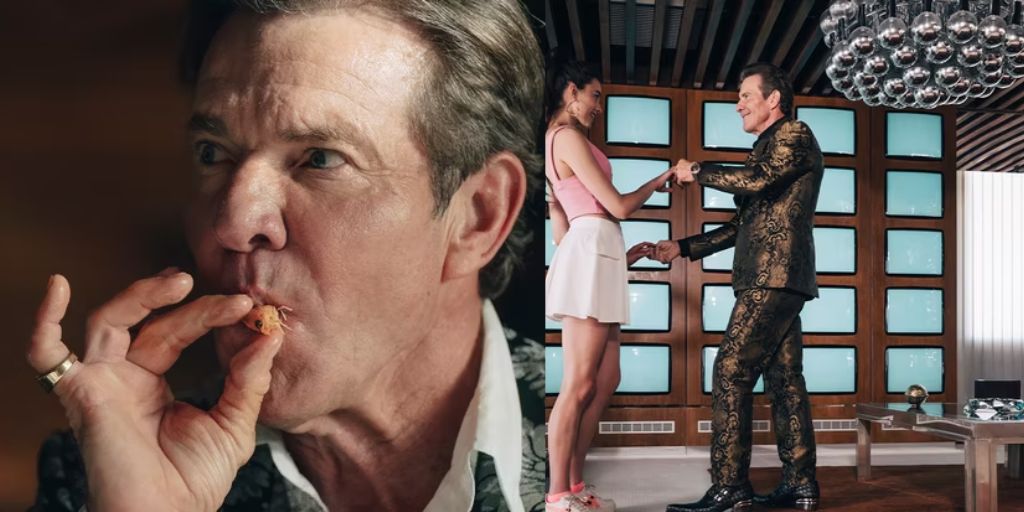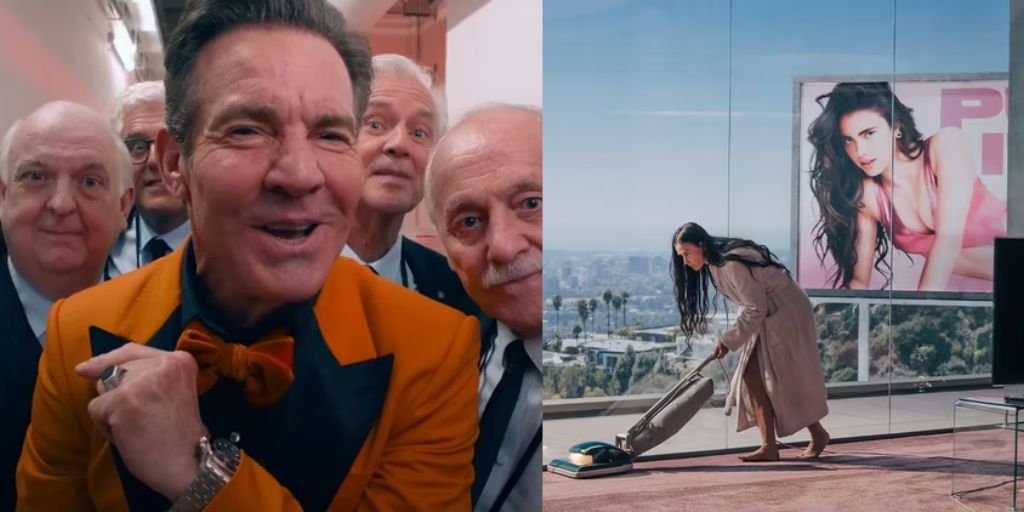Coralie Fargeat’s sci-fi body-horror film, The Substance, might be one of the most shocking and visually intense movies recently seen on screen. Elisabeth Sparkle, played by Demi Moore, descends into madness as she loses herself to Sue, portrayed by Margaret Qualley.
This decline is unsettling, not only due to the powerful performances but also the horrifying body transformations. These changes are reminiscent of Frankenstein’s monster, as Elisabeth’s body undergoes disgusting yet brilliantly executed alterations.
The fact that the bodily imagery continues to escalate in intensity demonstrates Fargeat’s masterful control over the audience’s emotions.
However, despite the terrifying body horror throughout The Substance, it is not the most disturbing element of the film. That title belongs to the way food is handled and presented.
Through its sound design and framing, the food in this film gives the audience a real-world comparison for the body horror, allowing viewers to relate to the grotesque events on-screen.
The characters’ interactions with food also serve to comment on human nature, portraying people as gluttonous, greedy creatures who are never satisfied. This parallel enhances the tragedy that unfolds for Elisabeth, as she becomes consumed with her own flaws, unable to see the universal imperfections of others.
Food in The Substance Sets Up the Body Horror to Come
The presentation of food in The Substance plays a crucial role in preparing the audience for the body horror that unfolds later. Early in the film, there is an unsettling scene involving an egg yolk, which is injected with a mysterious substance.
As a second yolk is “birthed” from the original, the viewer immediately grasps the disturbing tone of the film. The sound design accompanying this scene, with its squelching and slimy textures, makes the audience uncomfortable right from the start.
This scene sets the tone for the rest of the film, establishing a strong connection between the disturbing imagery of food and the body horror that will follow.
What is particularly remarkable about this scene is that Fargeat never has to move the camera to establish the film’s unsettling atmosphere. The sound and visuals of the egg yolk alone are enough to convey the disturbing premise of the film.
From this point forward, every instance involving food is designed to provoke a reaction of disgust from the audience. The way the food is shot and the sounds that accompany it make it clear that nothing in The Substance is meant to be comforting or familiar.
The way food is consumed also plays a major role in building up the tension and horror in the film. There are several moments where we see characters devouring food in grotesque ways, with close-up shots of their lips slobbering over their meals.
Elisabeth, for instance, has a particularly unsettling scene where she eviscerates a turkey. The crunching, squashing, and ripping sounds of food being eaten provide a strong sensory connection to the body horror that follows.
The audience is made to feel the texture and sound of food being chewed and squashed, so when similar sound effects and visuals are used for the body horror, we already have a frame of reference for what makes it so disgusting.
This connection between food and body horror is most evident in Elisabeth’s final transformation. In one of the film’s most shocking moments, Elisabeth’s body has morphed so completely that a breast pops out of her face.
The sound of this transformation is reminiscent of someone throwing up, making the connection between food and bodily disgust even stronger.
The audience is reminded of their own experiences with food—whether it’s seeing someone eat messily or the sensation of eating something unpleasant. This visceral reaction is heightened by the film’s constant association of food with bodily disgust.
The Way Characters Eat Frames Humans as Gluttonous Monsters in The Substance
The way the characters consume food throughout The Substance is deliberately grotesque and helps to frame humans as greedy, gluttonous creatures. This theme is reinforced by how certain characters are portrayed in their eating habits.
One character, Harvey, played by Dennis Quaid, is a prime example of this theme. As the head of a studio, Harvey embodies toxic masculinity, and his repulsive nature is emphasized through the way he eats. In one particularly disturbing scene, Harvey devours prawns, ripping apart their flesh and leaving a mess everywhere.
This depiction of his eating habits reinforces his character as a repulsive, greedy individual who consumes everything around him, both literally and figuratively.
Coralie Fargeat discussed this idea in an interview with Off-Screen Central. She explained how Sue’s body in the film, and the “hyper-sexualized version of herself,” is presented as something to be watched and consumed. The film shows this through Harvey’s hungry gaze, as he lusts after Sue while messily stuffing his face with food.
The way Harvey eats highlights his depravity and greed, characteristics that go beyond the dining table and reflect his full behavior throughout the film.

Sue’s relationship with consumption is also significant in the film. Although she doesn’t engage in the same messy eating as Harvey, the way she drinks her beverages is still unsettling. In one scene, Sue sips from a straw, and the audience hears every “glug glug” as she drinks.
These sounds are amplified, and even the way the camera frames Sue’s drinking emphasizes how much she is taking in from her surroundings. The male gaze is further disrupted by these grotesque sounds, turning what could have been a seductive moment into something far more unsettling.
The film also shows the theme of consumption on a broader scale through the dialogue between Elisabeth and an elderly man she meets at a diner. The man warns Elisabeth that the “Other Self” will eventually consume her.
This foreshadows Sue’s eventual takeover of Elisabeth’s life, as she consumes everything that Elisabeth once had—her soul, her body, and her existence.
Despite all that Sue takes from Elisabeth, it is never enough, leading to the final monstrous transformation. This serves as a commentary on human nature, suggesting that no matter how much we consume, it will never be enough to satisfy our greed.
Demi Moore’s Elisabeth Cannot See How All Humans Are Imperfect
The tragic downfall of Demi Moore’s character, Elisabeth, is amplified by the film’s food imagery. The movie repeatedly emphasizes that humans, in their natural state, are deeply flawed creatures. Even those who appear outwardly beautiful, like Elisabeth, are still guilty of the same gluttonous tendencies as the rest of humanity.
Coralie Fargeat explained this concept further in an interview with Elle, stating that “when you’re a woman, your body is everything but neutral in the public space.” She added that women often internalize societal standards of beauty, which makes Elisabeth’s obsession with her own flaws even more heartbreaking.
Throughout the film, Elisabeth is constantly shown struggling with her self-image. She becomes consumed by her flaws and imperfections, unable to recognize that everyone else around her is equally flawed. In one scene, she repeatedly applies makeup before canceling a date with Oliver, played by Gore Adams.

Despite looking stunning, Elisabeth is unable to see her own beauty. She drowns herself in layers of makeup, each application reflecting her increasing self-loathing. This moment illustrates how deeply she has internalized her insecurities, and it marks the beginning of her self-destruction.
By the end of the film, Elisabeth’s inability to recognize her own worth leads to her ultimate downfall. She is consumed by both society and her “Other Self,” Sue.
This tragic ending serves as a powerful commentary on the dangers of self-loathing and the pressure to conform to societal standards of beauty. The film’s final image of Elisabeth, reduced to nothing but a face on her Hollywood star, is a poignant reminder of how she lost herself entirely.




